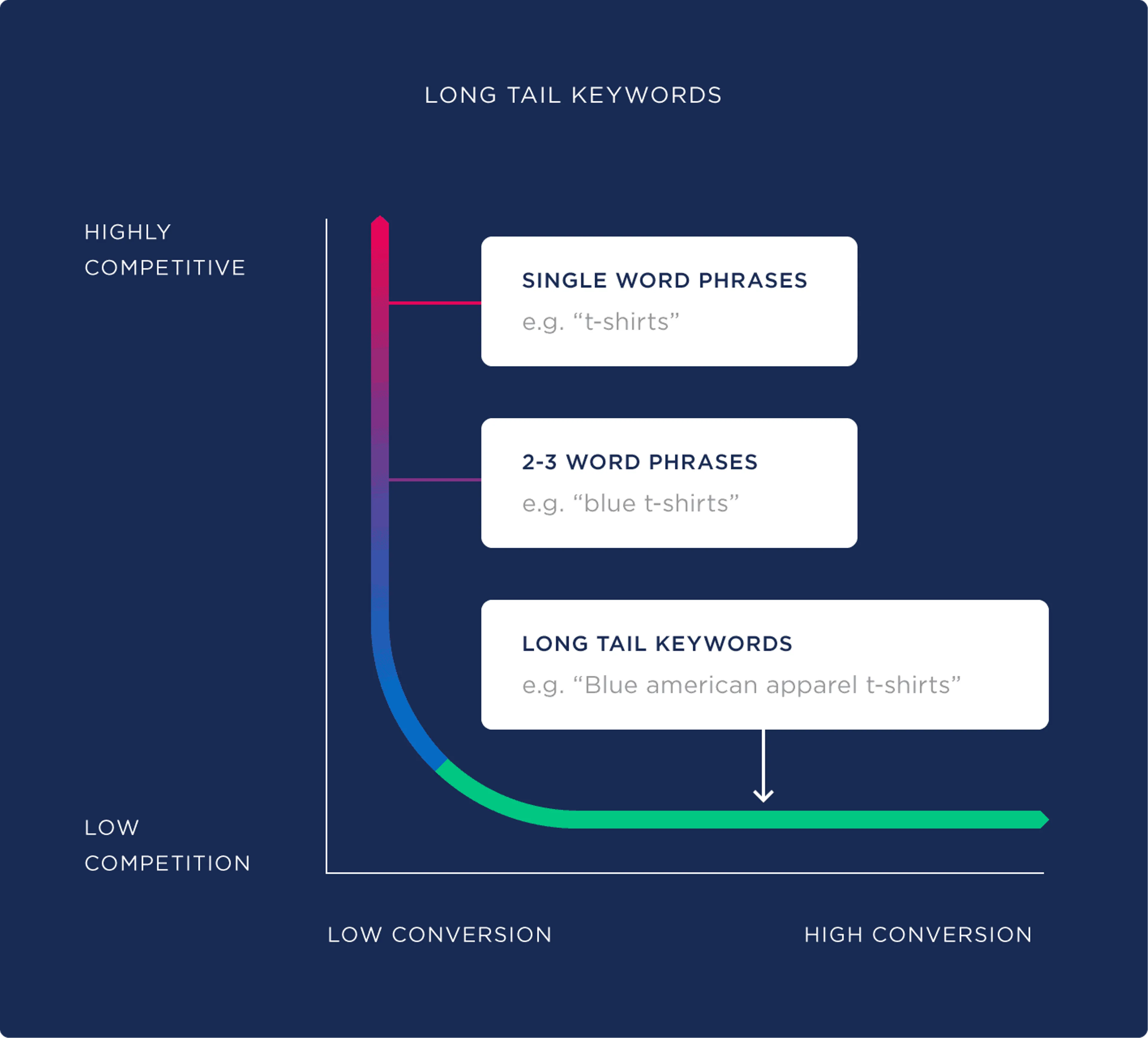
Examples of long tail keywords
As you can see in the examples below, a long-tail keyword doesn’t need to have a specific length, and it doesn’t need to include your head keyword. That being said, long-tail keywords often contain around 3 – 5 words, and in many cases they do include the head keyword too.

Why focus on long-tail keywords?
A long-tail keyword strategy can really help you out when there’s a lot of competition in your market. Or a lot of competition for the main keywords you want to rank for. That being said, most companies or blogs can benefit from this strategy as it helps you attract visitors with a very specific search intent. Here, I’ll explain what long-tail keywords are and how an understanding of your mission and product can help you set up a long-tail keyword strategy.

Keyword Search Volume The Most Deceptive Metric in SEO
Some of the most important decisions in SEO are based on search volume data. We use it to compare keywords, to guide our content strategy, and to make traffic projections. We may even use it to predict conversions and revenue. And yet, it is one of the least reliable pieces of data to exist in SEO.

Content Writing Trends For 2023
The fourth industrial revolution and Web 3.0 continue to transform all legacy communication platforms – from how we consume news to how we market our products.

Search Volume and Keyword Difficulty
Keyword difficulty can come in a variety of metrics from various tools.

How to Perform Keyword Research
Keyword research may be the most important step in an SEO campaign. Just as you wouldn’t build a house on a muddy slope without a proper foundation, you wouldn’t want to begin optimizing a website for search without a solid foundation. To properly lay a foundation, you first need to understand what requirements need to be fulfilled. The same goes for any SEO campaign, you need to understand the requirements of your target audience and how they are searching for solutions, ie. your content, services, or products.

What is Keyword Difficulty?
Keyword Difficulty (also known as “SEO difficulty” or “keyword competition”) is the process of evaluating how difficult it is to rank in Google’s organic search results for a specific term. A keyword’s difficulty is based on a number of different factors, including domain authority, page authority, and content quality.

What Is Keyword Optimization and Why Is It Important?
Keyword optimization is the practice of ensuring that the target keywords you’ve chosen for your campaign are genuinely effective at driving high-quality traffic to your website and boosting your SERP rankings. There are generally three stages in any keyword optimization effort:

SEO Blog what ?
Organic Search is the largest driver of traffic to websites across the internet, accounting for 53% of organic traffic to websites across the internet.

What Is the Value of Keywords in SEO?
Keywords are words or phrases that help search engines identify the topics that your content covers. Algorithms have sophisticated systems for analyzing the keywords that users employ in their queries as well as the terms that are used throughout a given piece of content. This helps them match the user with the content that will best answer their needs.